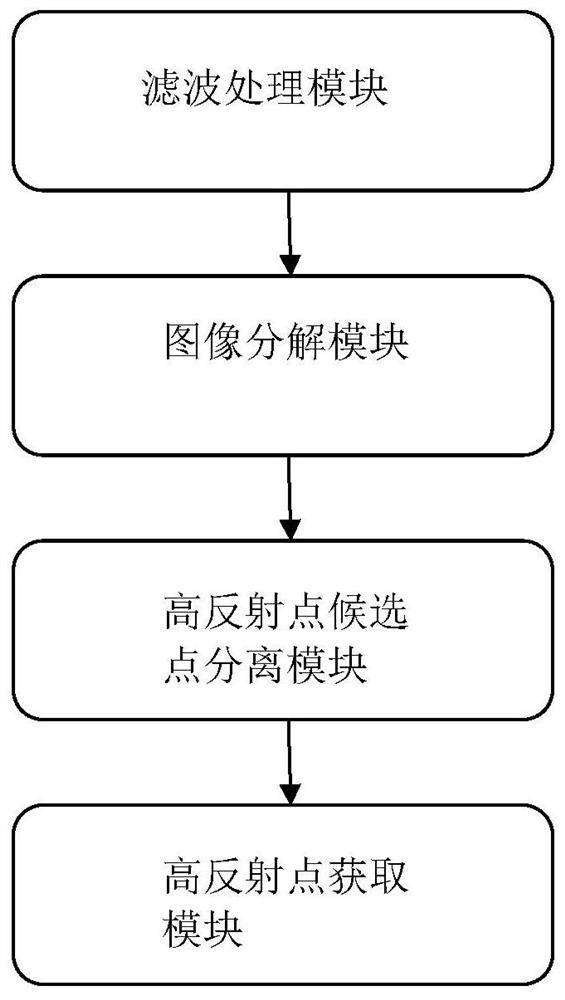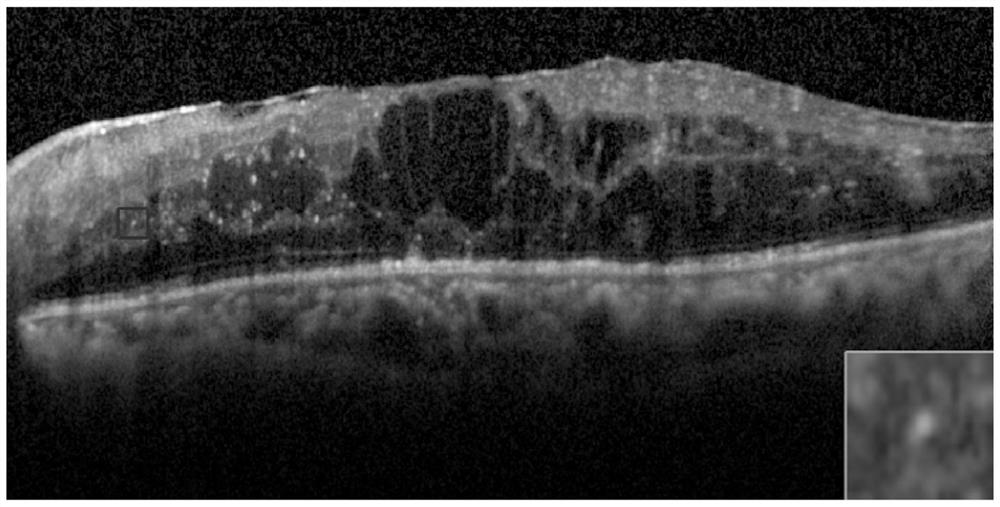Segmentation method and realization system of ophthalmology sd-oct high reflection point based on image decomposition
A SD-OCT, high-reflection technology, applied in the field of image processing, can solve the problem of not destroying the structure information of high-reflection points, and achieve the effect of meeting the requirements of accuracy, reducing influence and increasing contrast.
- Summary
- Abstract
- Description
- Claims
- Application Information
AI Technical Summary
Problems solved by technology
Method used
Image
Examples
Embodiment 1
[0045] An ophthalmological SD-OCT high-reflection point segmentation method based on image decomposition, such as figure 1 shown, including the following steps:
[0046] (1) The original SD-OCT image is filtered by improved bilateral filtering to reduce noise interference and increase the contrast between the high reflection point and the background.
[0047] (2) Using image decomposition technology to decompose the filtered image in step (1) into a smooth part and a sparse part, and high reflection points exist in the sparse part; the purpose is to reduce the influence of the background on the segmentation of the high reflection points, so that the high reflection points Using a simple threshold method can get better segmentation results.
[0048] (3) The high-reflection point candidates are separated from the sparse part by a simple adaptive threshold method, and the discrete points and large areas in the threshold result are removed by morphological processing to obtain th...
Embodiment 2
[0050] The ophthalmic SD-OCT high-reflection point segmentation method based on image decomposition, the difference is:
[0051] In step (1), since the high-reflection points are brighter points in the image, the influence of the size of the pixel value on the filtering result is added to the original bilateral filtering method, that is, the point with a larger pixel value has a greater influence on the filtering result, and the pixel value has a greater influence on the filtering result. Points with smaller values have less influence on the filtering result. The improved bilateral filtering formula is shown in formula (I):
[0052]
[0053] In formula (I), q is the pixel currently being processed; S represents the neighborhood with q as the center and radius d; p represents the pixel in the neighborhood of S; I p Represents the pixel value of point p; G k (p) represents the weight of the spatial distance from point p to point q. The farther the distance is, the less in...
Embodiment 3
[0067] The implementation system of the ophthalmology SD-OCT high-reflection point segmentation method based on image decomposition described in embodiment 1 or 2, such as figure 2 As shown, it includes a filtering processing module, an image decomposition module, a high-reflection point candidate point separation module and a high-reflection point acquisition module that are connected in sequence;
[0068] The filtering processing module is used to realize the above step (1); the image decomposition module is used to realize the above step (2); The point candidate points are separated from the sparse part; the high-reflection point acquisition module is used to remove discrete points and large areas in the threshold result using morphological processing in the above step (3), and obtain the final high-reflection point.
PUM
 Login to View More
Login to View More Abstract
Description
Claims
Application Information
 Login to View More
Login to View More - R&D
- Intellectual Property
- Life Sciences
- Materials
- Tech Scout
- Unparalleled Data Quality
- Higher Quality Content
- 60% Fewer Hallucinations
Browse by: Latest US Patents, China's latest patents, Technical Efficacy Thesaurus, Application Domain, Technology Topic, Popular Technical Reports.
© 2025 PatSnap. All rights reserved.Legal|Privacy policy|Modern Slavery Act Transparency Statement|Sitemap|About US| Contact US: help@patsnap.com



